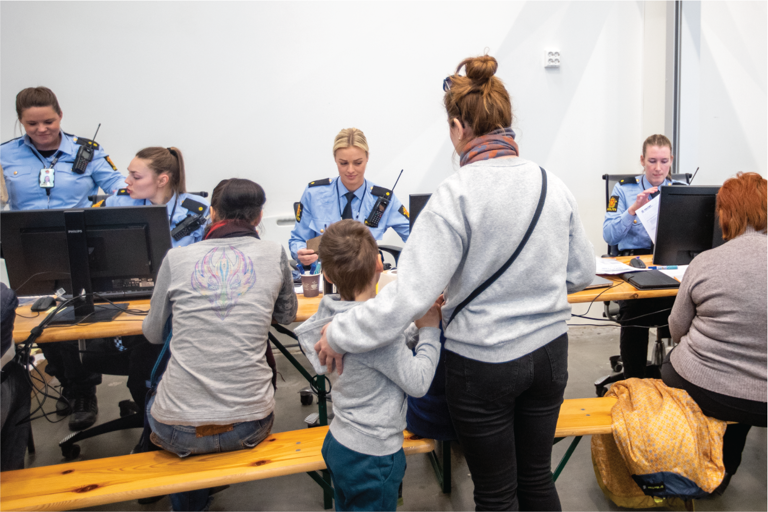Registration as an asylum seeker
On this page, you will find information about what you need to do to register as an asylum seeker.

Registration as an asylum seeker
As of 15 July 2024, anyone applying for protection must go to Råde to register their application at the National Arrival Centre. The Norwegian police have more information about where to register.
We cannot offer you a place to stay until you have registered at the National Arrival Centre.
You have to make your own travel arrangements to the National Arrival Centre, which means that you will have to pay for and organise your transportation to the centre. Children travelling alone (unaccompanied minor asylum-seekers) and others in particularly vulnerable situations will be able to get help to travel to the National Arrival Centre. Exceptions can also be made for anyone whose life or health is at risk.
If you have fled the war in Ukraine and applied for protection in Norway, it is the immigration authorities who decide whether your application is to be included in a group assessment or whether it is to be assessed individually. Applications that are assessed as part of the group assessment may grant you collective protection, while applications that are assessed individually may grant you protection (asylum) on ordinary terms.
When you arrive at the National Arrival Centre, you will be welcomed by staff who will give you information about what will happen next. The National Police Immigration Service will register your application for protection at the centre.
You can read about what happens when you register at the National Arrival Centre on the Directorate of Immigration’s website.
Read more about registration at the National Arrival Centre.
At the arrival centre, you will have a meeting with the police and you will hand in your passport and other ID documents.
People usually stay at the arrival centre for a fairly short period.
Where your family was registered plays no role in IMDi’s decision regarding your settlement location. When you register, it is important that you let the police know if you have any close family in Norway so that they are aware of this when finding accommodation for you in an asylum reception centre.
The Directorate of Immigration does everything it can to make it possible for close family members to live together in the same asylum reception centre.
There are two kinds of identification numbers in Norway:
- D number
- National identity number
Your identification number is unique and is used to identify you and give you access to services in Norway.
When you register as an asylum seeker from Ukraine, you’ll receive a temporary Norwegian identification number, a D number. Generally, you’ll receive information about your D number in an asylum seeker card, which you will get from the police.
If you get a residence permit, you’ll be assigned a Norwegian national identity number.
An electronic ID gives you online access to public services
When you have received a Norwegian identification number (national identity number or D number), you can get an electronic ID. An electronic ID gives you access to online services from local and public authorities.
When you have received a Norwegian identification number (national identity number or D number), you can get an electronic ID. An electronic ID gives you access to online services from local and public authorities.
Application for protection
When the police at the arrival centre have registered your application for protection, they will send your application to the Directorate of Immigration (UDI) for processing.
When the UDI has received the application from the police, you will receive an email confirming this.
In some cases, the police or the UDI must carry out additional investigations. You will be notified if the police or the UDI need to speak to you.
If you have fled the war in Ukraine and applied for protection in Norway, the UDI will process your application either as part of a group assessment (collective protection) or consider it individually (ordinary protection).
Refugees from Ukraine are eligible for collective protection in Norway. You will be granted collective protection if you meet the conditions for such a permit.
You can read more about who is eligible for collective protection on the UDI’s website.
You will be notified if you are not eligible for collective protection.
If you are not among those eligible for collective protection, the UDI will carry out an individual assessment of your application.
In some cases, it becomes clear already at the time of registration that an application does not meet the conditions for collective protection. In that case, your application will be transferred immediately to the ordinary procedure for protection.
In other cases, it will only become clear later on in the processing of the application that the requirements for collective protection have not been met. Your application will then be transferred to the ordinary procedure for protection.
- Read more about the difference between individual protection and collective protection.
- Read more about who is not covered by the collective protection scheme.
Ordinary protection means that you are granted a residence permit as a refugee in Norway based on an individual assessment of your application.
You can read about the requirements for being granted ordinary protection on the UDI’s website.